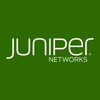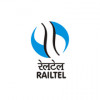


i
Tejas
Networks
Work with us
![]()
Filter interviews by
Tejas Networks Interview Questions and Answers
79 Interview questions
GMPLS extends MPLS to manage multiple network layers, enabling efficient data transport across diverse technologies.
Supports multiple types of switching (e.g., packet, time, wavelength, and fiber).
Facilitates dynamic provisioning of network resources.
Enhances network scalability and flexibility.
Example: GMPLS can manage both IP traffic and optical wavelengths in a single network.
Improves network resilience and rec...
DWDM is a technology that multiplexes multiple optical signals on a single fiber by using different wavelengths.
Increases bandwidth by allowing multiple channels on a single fiber.
Each channel can carry data at rates of 10 Gbps, 40 Gbps, or higher.
Commonly used in long-haul telecommunications and data center interconnects.
Example: A single fiber can carry 80 channels at 100 Gbps each, totaling 8 Tbps.
Enables effic...
An OTN frame consists of a structured format for transporting data over optical networks, ensuring efficient and reliable transmission.
OTN frames are composed of a fixed-size payload and overhead for management.
The main components include the Optical Payload Unit (OPU), Optical Transport Unit (OTU), and Forward Error Correction (FEC).
The OPU carries client signals, while the OTU encapsulates the OPU for transport.
...
Use a Set to remove duplicate elements from an array of strings.
Create a Set from the array to automatically remove duplicates
Convert the Set back to an array to get the unique elements
Example: const array = ['apple', 'banana', 'apple', 'orange']; const uniqueArray = [...new Set(array)];
VPNs are secure networks that allow users to access the internet privately and securely.
VPNs encrypt internet traffic to protect data from hackers and surveillance.
They can be used to access region-restricted websites or bypass censorship.
Common VPN protocols include OpenVPN, L2TP/IPsec, and IKEv2.
VPN services like NordVPN, ExpressVPN, and CyberGhost offer secure connections.
Businesses often use VPNs to allow remo...
Lists, sets, and tuples are data structures in Python used to store collections of items.
Lists are ordered, mutable, and allow duplicate elements. Example: [1, 2, 3]
Sets are unordered, mutable, and do not allow duplicate elements. Example: {1, 2, 3}
Tuples are ordered, immutable, and allow duplicate elements. Example: (1, 2, 3)
Threads in programming are independent paths of execution within a program.
Threads allow for concurrent execution of tasks within a program.
Threads share the same memory space, allowing for communication and data sharing between them.
Examples of using threads include multi-threaded web servers, parallel processing, and background tasks in applications.
NumPy is a library in Python used for numerical computing, providing support for large, multi-dimensional arrays and matrices.
NumPy stands for Numerical Python.
It is widely used for scientific computing and data analysis.
NumPy arrays are more efficient than Python lists for numerical operations.
Example: import numpy as np
Example: arr = np.array([1, 2, 3])
To rotate a 3x3 matrix 270 degrees anti-clockwise, transpose the matrix and then reverse the rows.
Transpose the matrix by swapping elements across the diagonal
Reverse the rows of the transposed matrix
The OSI model consists of seven layers that define the different functions of a network communication system.
Physical layer: Deals with physical connections and transmission of raw data.
Data link layer: Manages data transfer between devices on the same network.
Network layer: Handles routing and forwarding of data packets.
Transport layer: Ensures reliable data transfer between end systems.
Session layer: Manages com...
Tejas Networks Interview Experiences
80 interviews found
I appeared for an interview in Jan 2025.
The first round consisted of an aptitude and coding assessment. It included several aptitude questions and technical multiple-choice questions on networking. Additionally, there was one straightforward coding question that needed to be solved using Python.
(15 Questions)
- Q1. Tell me about yourself.
- Q2. What are lists, sets, and tuples in Python?
- Ans.
Lists, sets, and tuples are data structures in Python used to store collections of items.
Lists are ordered, mutable, and allow duplicate elements. Example: [1, 2, 3]
Sets are unordered, mutable, and do not allow duplicate elements. Example: {1, 2, 3}
Tuples are ordered, immutable, and allow duplicate elements. Example: (1, 2, 3)
- Q3. What is the difference between multiprogramming and multitasking?
- Ans.
Multiprogramming involves running multiple programs on a single processor, while multitasking involves executing multiple tasks within a single program.
Multiprogramming allows multiple programs to be loaded into memory and executed concurrently.
Multitasking involves switching between different tasks within a single program, giving the illusion of parallel execution.
Examples of multiprogramming include time-sharing syst...
- Q4. What is your understanding of threads in programming?
- Ans.
Threads in programming are independent paths of execution within a program.
Threads allow for concurrent execution of tasks within a program.
Threads share the same memory space, allowing for communication and data sharing between them.
Examples of using threads include multi-threaded web servers, parallel processing, and background tasks in applications.
- Q5. What is the code to check whether a string is a palindrome?
- Ans.
Use two pointers to compare characters from start and end of the string.
Initialize two pointers, one at the start of the string and one at the end.
Compare characters at both pointers, move towards the center while checking for equality.
If all characters match, the string is a palindrome.
- Q6. What is the code to rotate a 3x3 matrix 270 degrees anti-clockwise?
- Ans.
To rotate a 3x3 matrix 270 degrees anti-clockwise, transpose the matrix and then reverse the rows.
Transpose the matrix by swapping elements across the diagonal
Reverse the rows of the transposed matrix
- Q7. What is the code to remove duplicate elements from an array?
- Ans.
Use a Set to remove duplicate elements from an array of strings.
Create a Set from the array to automatically remove duplicates
Convert the Set back to an array to get the unique elements
Example: const array = ['apple', 'banana', 'apple', 'orange']; const uniqueArray = [...new Set(array)];
- Q8. What conventions are typically followed when writing a program?
- Ans.
Conventions like naming variables, using comments, and following indentation are typically followed when writing a program.
Use meaningful variable names to improve code readability
Include comments to explain complex sections of code
Follow consistent indentation for better code organization
- Q9. What is the purpose of a subnet mask in networking?
- Ans.
A subnet mask is used to divide an IP address into network and host portions.
Defines the network portion of an IP address
Helps determine which part of the IP address is the network ID and which part is the host ID
Used in conjunction with IP addresses to route traffic within a network
Common subnet masks include 255.255.255.0 for a Class C network
- Q10. What are the different layers of the OSI model?
- Ans.
The OSI model consists of seven layers that define the different functions of a network communication system.
Physical layer: Deals with physical connections and transmission of raw data.
Data link layer: Manages data transfer between devices on the same network.
Network layer: Handles routing and forwarding of data packets.
Transport layer: Ensures reliable data transfer between end systems.
Session layer: Manages communic...
- Q11. What is NumPy in Python?
- Ans.
NumPy is a library in Python used for numerical computing, providing support for large, multi-dimensional arrays and matrices.
NumPy stands for Numerical Python.
It is widely used for scientific computing and data analysis.
NumPy arrays are more efficient than Python lists for numerical operations.
Example: import numpy as np
Example: arr = np.array([1, 2, 3])
- Q12. What is an IP address and what are its classes?
- Ans.
An IP address is a unique numerical label assigned to each device connected to a computer network.
IP address stands for Internet Protocol address.
It is used to identify and locate devices on a network.
There are 5 classes of IP addresses: A, B, C, D, and E.
Each class has a different range of possible addresses.
For example, Class A addresses range from 1.0.0.0 to 126.255.255.255.
- Q13. What is your knowledge of Virtual Private Networks (VPNs)?
- Ans.
VPNs are secure networks that allow users to access the internet privately and securely.
VPNs encrypt internet traffic to protect data from hackers and surveillance.
They can be used to access region-restricted websites or bypass censorship.
Common VPN protocols include OpenVPN, L2TP/IPsec, and IKEv2.
VPN services like NordVPN, ExpressVPN, and CyberGhost offer secure connections.
Businesses often use VPNs to allow remote em...
- Q14. What is the function of a router gateway?
- Ans.
A router gateway is a device that connects different networks and routes data between them.
Acts as an entry and exit point for data traffic between networks
Provides security by filtering incoming and outgoing traffic
Assigns IP addresses to devices on the network
Controls the flow of data packets between networks
- Q15. Can you provide more details about the projects you have worked on?
- Ans.
I have worked on various projects including designing solar panel systems for residential and commercial buildings.
Designed and implemented solar panel systems for residential homes
Managed the installation of solar panels on commercial buildings
Optimized solar panel layouts for maximum energy efficiency
Collaborated with architects and engineers to integrate solar panels into building designs
(5 Questions)
- Q1. Tell me about yourself.
- Q2. What are your hobbies?
- Ans.
My hobbies include hiking, reading, and playing the guitar.
Hiking: I enjoy exploring nature trails and challenging myself physically.
Reading: I love getting lost in a good book, especially fiction and mystery genres.
Playing the guitar: I find playing music to be a relaxing and creative outlet.
- Q3. What is your current place of residence?
- Ans.
I currently reside in a cozy apartment in downtown Seattle.
Reside in downtown Seattle
Live in a cozy apartment
Current place of residence
- Q4. What are the reasons for your interest in Tejas Networks?
- Ans.
I am interested in Tejas Networks due to their innovative technology and strong reputation in the industry.
Innovative technology: Tejas Networks is known for their cutting-edge solutions in the field of optical networking.
Strong reputation: Tejas Networks has a proven track record of delivering high-quality products and services to their customers.
Career growth opportunities: I believe that working at Tejas Networks wi...
- Q5. Are you open for any role
- Ans.
Yes, I am open to any role that aligns with my skills and interests.
I am flexible and willing to learn new skills if needed
I am open to exploring different roles within the engineering field
I believe in taking on new challenges and opportunities
For example, I have experience in mechanical engineering but am open to roles in electrical engineering as well
I applied via Recruitment Consulltant and was interviewed in Dec 2024. There were 2 interview rounds.
(4 Questions)
- Q1. What is stm-1 link
- Ans.
STM-1 link refers to a Synchronous Transport Module level 1 link used in telecommunications for transmitting data.
STM-1 link operates at a data rate of 155.52 Mbps.
It is commonly used in SDH (Synchronous Digital Hierarchy) networks.
STM-1 link can carry multiple DS3 or E3 circuits.
It is equivalent to 63 E1 channels or 28 DS1 channels.
- Q2. What is Ip address and subnet mask
- Ans.
An IP address is a unique numerical label assigned to each device connected to a computer network, while a subnet mask is used to divide an IP network into subnetworks.
IP address identifies a device on a network, like 192.168.1.1
Subnet mask determines the network portion of an IP address, like 255.255.255.0
Subnet mask is used to separate the network and host portions of an IP address
- Q3. What is OSI and TCP/IP Model
- Ans.
OSI and TCP/IP models are networking models that define how data is transmitted over a network.
OSI model has 7 layers: Physical, Data Link, Network, Transport, Session, Presentation, Application.
TCP/IP model has 4 layers: Network Interface, Internet, Transport, Application.
OSI model is theoretical while TCP/IP model is practical and widely used.
OSI model is a reference model while TCP/IP model is a protocol stack.
Examp...
- Q4. What are the requirements for the implementation of stm-1 link and what is the capacity of stm-1 link
- Ans.
Requirements and capacity of stm-1 link implementation
Requirements include fiber optic cables, SDH equipment, and proper configuration
Capacity of stm-1 link is 155.52 Mbps
STM-1 link is commonly used in telecommunications for high-speed data transmission
(15 Questions)
- Q1. What is ip address and difference between ipv4 and ipv6?
- Ans.
An IP address is a unique numerical label assigned to each device connected to a computer network. IPv4 uses 32-bit addresses, while IPv6 uses 128-bit addresses.
IP address is a unique identifier for devices on a network.
IPv4 uses 32-bit addresses, represented in decimal format (e.g. 192.168.1.1).
IPv6 uses 128-bit addresses, represented in hexadecimal format (e.g. 2001:0db8:85a3:0000:0000:8a2e:0370:7334).
- Q2. What is vlan and vlan-id
- Ans.
VLAN stands for Virtual Local Area Network. VLAN ID is a unique identifier assigned to a VLAN.
VLAN is a logical grouping of devices on the same network segment.
VLANs help in segmenting network traffic for security and performance reasons.
VLAN ID is a number assigned to each VLAN to differentiate it from others.
For example, VLAN 10 might be used for finance department while VLAN 20 for marketing.
- Q3. What is layer-2 and layer-3 services. Also what is the difference between them.
- Ans.
Layer-2 and layer-3 services refer to different levels of network services in the OSI model.
Layer-2 services operate at the data link layer and include functions like MAC address assignment and Ethernet switching.
Layer-3 services operate at the network layer and include functions like IP address assignment and routing.
The main difference between layer-2 and layer-3 services is the level at which they operate in the OSI...
- Q4. Explain sdh structure and sdh frame
- Ans.
SDH structure refers to the hierarchy of synchronous digital signals, while SDH frame is the basic unit of data transmission in SDH networks.
SDH structure includes various levels such as STM-1, STM-4, STM-16, etc.
SDH frame consists of a fixed number of bytes, with overhead for management and error correction.
SDH frame structure includes sections, lines, and paths for data transmission.
Example: STM-1 is a common level i...
- Q5. What is DCCR and DCCM?
- Ans.
DCCR stands for Data Center Control Room and DCCM stands for Data Center Construction Manager.
DCCR is a centralized location within a data center where operators monitor the performance of servers, networks, and other equipment.
DCCM is responsible for overseeing the construction and maintenance of data center facilities.
Examples: DCCR helps in ensuring smooth operations of data centers by monitoring and managing resour...
- Q6. What is ipv4 and ipv6 address of google dns server
- Ans.
IPv4 address of Google DNS server is 8.8.8.8 and IPv6 address is 2001:4860:4860::8888.
IPv4 address: 8.8.8.8
IPv6 address: 2001:4860:4860::8888
- Q7. What is subnet mask and how to calculate the no. Of usable ip's. What is network host ip and broadcast ip
- Ans.
Subnet mask is used to divide an IP network into subnetworks, determining the network and host portions of an IP address.
Subnet mask is a 32-bit number that separates the network and host portions of an IP address.
To calculate the number of usable IPs in a subnet, subtract 2 from the total number of IPs in the subnet.
Network host IP is the first IP address in a subnet, while broadcast IP is the last IP address in a sub...
- Q8. What are different kinds of cards used in tejas 1400 and 1600 mux.
- Ans.
Different kinds of cards used in Tejas 1400 and 1600 mux include line cards, switch cards, and power cards.
Line cards: used for connecting the mux to external devices
Switch cards: used for routing data within the mux
Power cards: used for providing power to the mux
Examples: STM-1 line card, STM-4 switch card, power supply card
- Q9. What is difference between xa60g and xa20g card.
- Ans.
The main difference between xa60g and xa20g cards is the processing power and memory capacity.
xa60g card has higher processing power and memory capacity compared to xa20g card
xa60g card is more suitable for high-performance computing tasks
xa20g card may be more cost-effective for less demanding applications
- Q10. What is gpon technology? Also explain briefly gpon architecture?
- Ans.
GPON technology is a type of passive optical network that uses fiber-optic cables to deliver high-speed internet, TV, and phone services.
GPON stands for Gigabit Passive Optical Network
It uses a point-to-multipoint architecture, where a single optical fiber serves multiple users
GPON architecture includes an Optical Line Terminal (OLT) at the service provider's central office and Optical Network Terminals (ONTs) at the c...
- Q11. How to add and delete nodes in NMS?
- Ans.
Nodes can be added and deleted in NMS by using the management interface or command line interface.
Nodes can be added through the management interface by selecting the 'Add Node' option and providing the necessary information such as IP address, hostname, and SNMP credentials.
Nodes can also be added through the command line interface by using specific commands to add a new node to the network management system.
To delete...
- Q12. How to upgrade software in olt, ont and tejas 1400 locally and from nms?
- Ans.
To upgrade software in OLT, ONT, and Tejas 1400 locally and from NMS, follow these steps.
Locally: Use a USB drive to transfer the software update file to the device. Access the device's management interface and initiate the upgrade process.
From NMS: Use the Network Management System (NMS) to remotely push the software update to the devices. Schedule the upgrade during off-peak hours to minimize disruption.
Ensure compat...
- Q13. What are different types of alarms occuring in tejas equipments
- Ans.
Different types of alarms in Tejas equipments include power alarms, temperature alarms, and communication alarms.
Power alarms: indicate issues with power supply or voltage levels
Temperature alarms: alert when equipment temperature exceeds safe limits
Communication alarms: signal problems with data transmission or network connectivity
- Q14. Explain VCG, VCAT
- Ans.
VCG stands for Voltage Controlled Gain and VCAT stands for Voltage Controlled Attenuator.
VCG is a circuit that adjusts the gain of an amplifier based on a control voltage.
VCAT is a circuit that adjusts the attenuation of a signal based on a control voltage.
Both VCG and VCAT are commonly used in electronic devices to control signal levels.
Example: VCG can be used in audio amplifiers to adjust the volume based on user in...
- Q15. What is ipmpls? What are the advantages of MPLS? Which one is better mpls or traditional routing.
- Ans.
MPLS stands for Multiprotocol Label Switching. It is a protocol used in high-performance telecommunications networks.
Advantages of MPLS include improved performance, scalability, quality of service, and traffic engineering capabilities
MPLS allows for efficient packet forwarding based on labels instead of IP addresses
MPLS can support different types of traffic, such as voice, video, and data, with different service leve...
Easy like time speed distance ,time and work
Above average like dynamic progrmming and arrays
(3 Questions)
- Q1. Based on resume
- Q2. About project and your role
- Q3. About skills mentioned
(2 Questions)
- Q1. Time speed distance related
- Q2. Arrays related questions
Very good but easy
easy question long question
(2 Questions)
- Q1. Java codingg on sql programming
- Q2. Colection framework java concept
There were 3 sections. 1st was aptitute 10 questions and 2nd section was technical 10 questions then 3rd section had 3 coding questions which were of easy level.
(2 Questions)
- Q1. Questions related to OS and CN and Core java were asked.
- Q2. A coding question was also asked to to find the second largest number.
(2 Questions)
- Q1. What is LTE in telecom.
- Ans.
LTE stands for Long-Term Evolution and is a standard for wireless broadband communication.
LTE is a 4G wireless communication standard used for high-speed data transmission.
It provides faster data speeds and lower latency compared to previous generations like 3G.
LTE is commonly used for mobile internet access, video streaming, and VoIP services.
Examples of LTE networks include Verizon, AT&T, and T-Mobile in the United S...
- Q2. What is the 5G in telecom.
- Ans.
5G in telecom refers to the fifth generation of wireless technology, promising faster speeds, lower latency, and increased capacity for mobile networks.
5G is the next generation of mobile network technology after 4G LTE.
It promises faster download and upload speeds, lower latency, and increased capacity for more connected devices.
5G uses higher frequency bands to achieve these improvements, but with shorter range compa...
I applied via Company Website and was interviewed in Jul 2024. There was 1 interview round.
(5 Questions)
- Q1. What's is yours sellary
- Ans.
My salary expectations are based on industry standards, my experience, and the value I bring to the role.
Research industry standards: For example, average salaries for Network Field Engineers in my region.
Consider my experience: I have 5 years of experience, which typically commands a higher salary.
Value addition: I have certifications like CCNA and CCNP, which enhance my marketability.
- Q2. I agree job and accept
- Q3. What is sellary
- Ans.
Salary is the payment or compensation an employee receives from an employer in exchange for work performed.
Salary is typically paid on a regular basis, such as monthly or bi-weekly.
It can be a fixed amount or vary based on factors like performance or seniority.
Salaries can include additional benefits such as health insurance, retirement contributions, and bonuses.
- Q4. What is job role
- Ans.
A Network Field Engineer is responsible for designing, implementing, and maintaining communication networks for organizations.
Designing and implementing network solutions
Troubleshooting network issues
Configuring network devices
Collaborating with other IT professionals
Providing technical support to end users
- Q5. What is job back and if field
- Ans.
Job back and if field refers to the tasks and responsibilities of a network field engineer.
Job back involves troubleshooting network issues in the field
Field work includes installing and configuring network equipment
Network field engineers may also perform maintenance and upgrades on existing networks
Interview Preparation Tips
(2 Questions)
- Q1. What is es6 in javascript language
- Ans.
ES6, also known as ECMAScript 2015, is the sixth major release of the JavaScript language that introduced new features and syntax improvements.
Introduced let and const for variable declarations
Added arrow functions for more concise syntax
Included classes for object-oriented programming
Introduced template literals for easier string interpolation
Added default parameters and rest parameters for functions
- Q2. What is hoisting
- Ans.
Hoisting is a JavaScript mechanism where variable and function declarations are moved to the top of their containing scope during compilation.
Variable and function declarations are hoisted to the top of their scope.
Only declarations are hoisted, not initializations.
Function declarations take precedence over variable declarations.
Skills evaluated in this interview
I applied via Naukri.com and was interviewed in May 2024. There were 3 interview rounds.
(2 Questions)
- Q1. About Role and Responsibilities
- Q2. Knowledge test on Resume
(2 Questions)
- Q1. Day to Day activities in previous Organisation
- Ans.
In my previous role, I focused on software development, team collaboration, and project management to deliver high-quality solutions.
Developed and maintained software applications using Java and Python, ensuring code quality through regular reviews.
Collaborated with cross-functional teams, including product management and QA, to define project requirements and timelines.
Led daily stand-up meetings to discuss progress, ...
- Q2. Hypothical Questions
(2 Questions)
- Q1. Current CTC and take home
- Q2. Expected CTC and take home
- Ans.
Expected CTC and take home should be based on industry standards and the candidate's experience and skills.
Expected CTC should be in line with industry standards for the position and the candidate's experience level.
Take home pay should be calculated after deductions like taxes and insurance.
Candidates can research average salaries for similar roles in the industry to get an idea of what to expect.
Negotiation is common...
Interview Preparation Tips
- Quality Tools and methodology
- RCA
- 7Qc
- 8D
- 4M
I applied via Walk-in and was interviewed in Jun 2024. There was 1 interview round.
(4 Questions)
- Q1. Smt Reel part number
- Q2. AOI Falls call details.
- Q3. Mininium 10 Fallscall approved
- Q4. Smt components 0603JR10K
Interview Preparation Tips
Top trending discussions






Tejas Networks Interview FAQs
Some of the top questions asked at the Tejas Networks interview -
The duration of Tejas Networks interview process can vary, but typically it takes about less than 2 weeks to complete.
Tell us how to improve this page.
Tejas Networks Interviews By Designations
- Tejas Networks R&D Engineer Interview Questions
- Tejas Networks Senior Engineer Interview Questions
- Tejas Networks Software Developer Interview Questions
- Tejas Networks Technician Interview Questions
- Tejas Networks Software Engineer Interview Questions
- Tejas Networks Senior R&D Engineer Interview Questions
- Tejas Networks Consultant Interview Questions
- Tejas Networks Senior Software Engineer Interview Questions
- Show more
Interview Questions for Popular Designations
Overall Interview Experience Rating
based on 85 interview experiences
Difficulty level
Duration
Interview Questions from Similar Companies
Tejas Networks Reviews and Ratings
based on 493 reviews
Rating in categories
10-16 Yrs
Not Disclosed
10-14 Yrs
₹ 22.7-30 LPA
|
R&D Engineer
298
salaries
| ₹10 L/yr - ₹16 L/yr |
|
Network Engineer
188
salaries
| ₹2 L/yr - ₹6 L/yr |
|
Senior Engineer
168
salaries
| ₹10 L/yr - ₹17 L/yr |
|
Engineer
132
salaries
| ₹4.5 L/yr - ₹9.6 L/yr |
|
Software Engineer
99
salaries
| ₹10 L/yr - ₹17.5 L/yr |
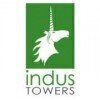
Indus Towers
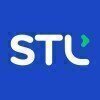
Sterlite Technologies

Cisco
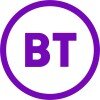
BT Business
- Home >
- Interviews >
- Tejas Networks Interview Questions

